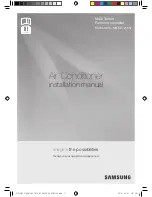
Caller ID
Description
Caller ID allows a display terminal to show an incoming caller’s telephone number (called the Directory
Number or DN) and optional name. The Caller ID information is available as pre-answer display. With
the pre-answer display, the user previews the caller’s number before picking up the ringing line.
On the CPU for Caller ID (also used for DTMF receivers and Call Progress Tone Detection) 24 (2W
Digital Multiline Terminal Configuration) resources are available. The EXIFB provides an additional 48
resources.
Second Call Display
While busy on a call, the telephone display can show the identity of an incoming trunk or Intercom call.
For incoming trunk calls, the display shows the Caller ID or the trunk name if Caller ID is not installed.
For incoming Intercom calls, the display shows the calling extension name.
Caller ID supports the Telco Called Number Identification (CNI) and Called Number Delivery (CND)
service, when available.
The telephone display can show up to 12 Caller ID digits (for non-ACD calls).
Once installed and programmed, Caller ID is enabled for all trunk calls, including:
• Ring Group calls
• Calls transferred from another extension
• Calls transferred from the VRS
• Calls transferred from Voice Mail (unscreened)
• Direct Inward Lines (DILs)
Caller ID temporarily stores 50 calls (total of abandoned and answered/unanswered). New calls
replace old calls when the buffer fills.
Temporary Memory
An unanswered call causes the Call History key (PRG 15-07 or SC
751
: 08) to flash, indicating a new
call was placed in the temporary memory. If enabled in programming, the telephone display shows
CHECK LIST.
This Caller ID data from the temporary memory can be saved in either Speed Dial bins or in One-
Touch keys making them available for placing future calls.
Cursor Key Operation (When set PRG 15-02-60: 0)
Pressing the
Left Cursor Key
twice (on equipped terminals) displays the Incoming Call History.
By pressing the Left Cursor Key the user can access the Redial and Incoming Call History menus. The
flow chart below shows the menu access sequence. If the terminal is not allowed to have the Dial
Preview feature, these menus cannot be accessed.
ISSUE 1.0
SL2100
Features and Specifications Manual
1-149
C
Summary of Contents for UNIVERGE SL2100
Page 1: ...Features and Specifications Manual GVT 010794 401 00 AU ISSUE 1 0 May 2017 ...
Page 14: ...MEMO SL2100 ISSUE 1 0 R 4 Regulatory ...
Page 313: ...Operation None ISSUE 1 0 SL2100 Features and Specifications Manual 1 299 D ...
Page 412: ...Operation None SL2100 ISSUE 1 0 1 398 Howler Tone Service H ...
Page 572: ...LCR Dial LCR Dial Editing SL2100 ISSUE 1 0 1 558 LCR Least Cost Routing L ...
Page 573: ...LCR Cost Center Code ISSUE 1 0 SL2100 Features and Specifications Manual 1 559 L ...
Page 846: ...2 Press Hold key and talk with the party SL2100 ISSUE 1 0 1 832 Tone Override T ...
Page 878: ...Operation None SL2100 ISSUE 1 0 1 864 Universal Slots U ...
Page 946: ...MEMO SL2100 ISSUE 1 0 1 932 Warning Tone for Long Conversation W ...
Page 976: ...MEMO SL2100 ISSUE 1 0 3 6 Features Availability by Software Revision ...
Page 977: ...MEMO ISSUE 1 0 SL2100 Features and Specifications Manual 3 7 ...
Page 978: ...Features and Specifications Manual NEC Corporation ISSUE 1 0 ...
















































